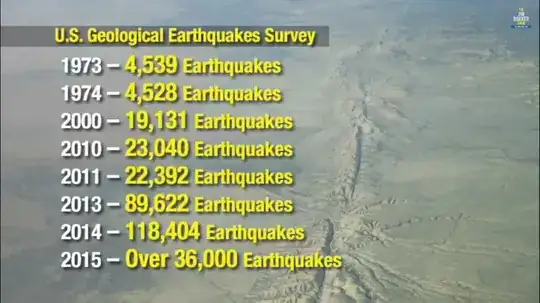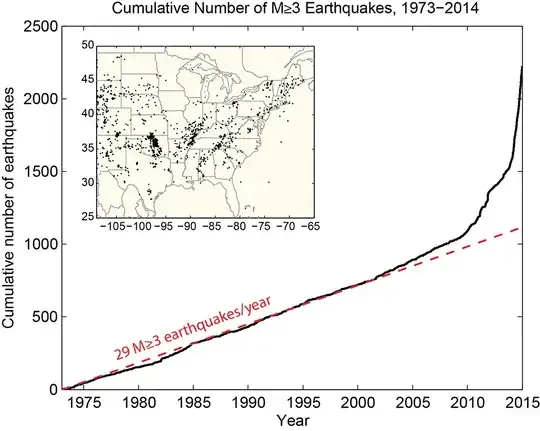This came across my social media feed:

U.S. Geological Earthquakes Survey
1973 - 4,539 Earthquakes
1974 — 4,528 Earthquakes
2000 — 19,131 Earthquakes
2010 — 23,040 Earthquakes
2011 — 22,392 Earthquakes
2013 — 89,622 Earthquakes
2014 — 118,404 Earthquakes
2015 — Over 36,000 Earthquakes...
One pastor gave this some context:
Earthquakes on the rise, USGS stats confirm. Jesus predicted 2000 yrs ago, "And GREAT EARTHquakes shall be in divers places, and famines, and pestilences; and FEARFUL sights and great signs shall there be from HEAVEN." (Luke 21:11) Christians, signs BELOW being fulfilled...now watch for signs from ABOVE!
The data seems to be a little selective, and I assume earthquake detection instruments have increased in both number and sensitivity since 1973.
Are earthquakes numbers increasing significantly and consistently since 1973?
